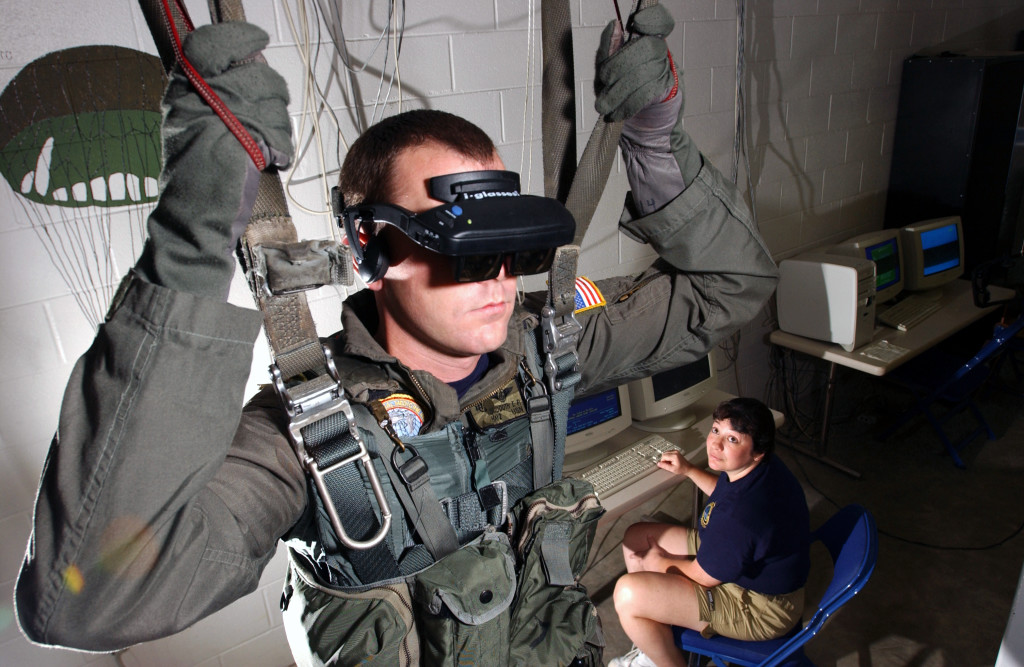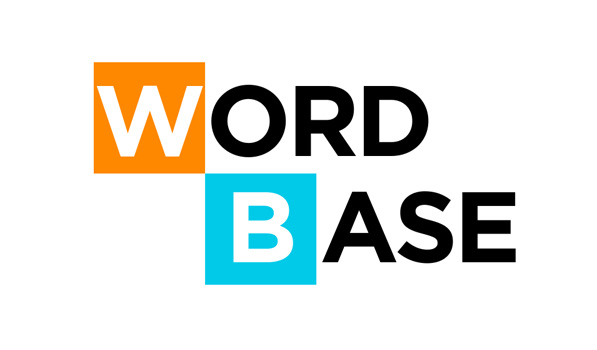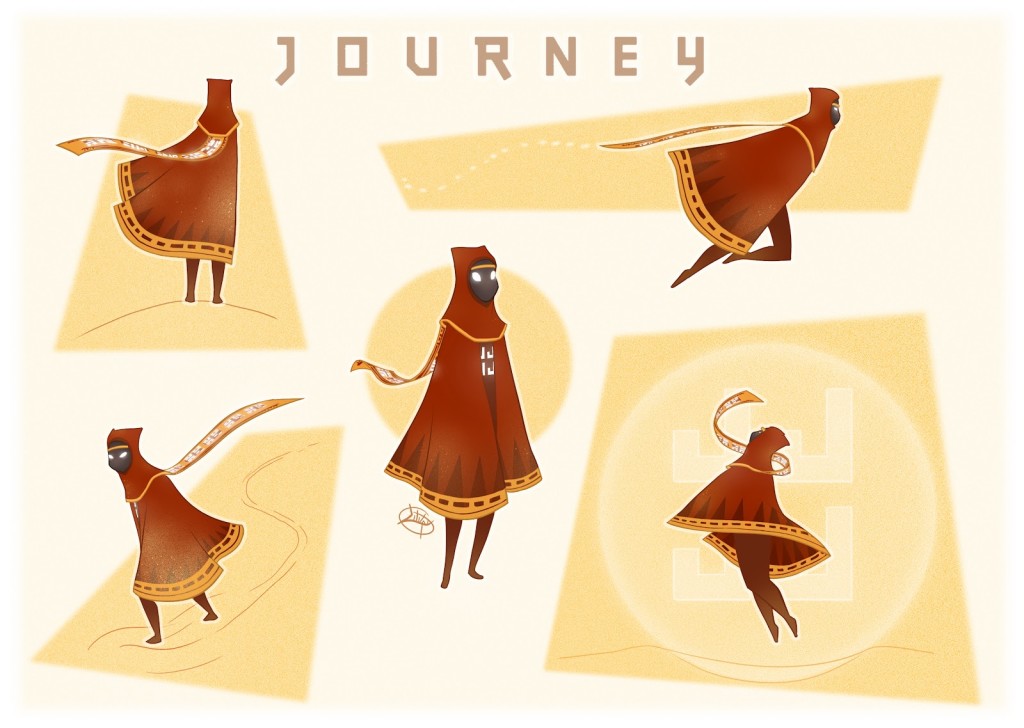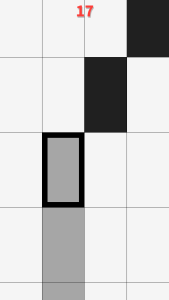-

-

-

-

-

-

-

-

-

-

-
-

-

-

-

-

-

-

-

-

-

-

-

-

-

-

-

-

-

-

-

-

-

-

-

-

-

-

-

-

-

-
-

-

-
 TOTW: Google's Project Ara Modular Phone May Be The Future Of SmartphonesOctober 30, 2014
TOTW: Google's Project Ara Modular Phone May Be The Future Of SmartphonesOctober 30, 2014 -

-

-

-

-

-

-

-

-

-

-

-

-

-

-
-
-

-

-

-

-

-

-

-

-

Posts tagged video games
Augmented vs. Virtual Part 1 – Virtual Reality
19 years
Technologically enhanced vision has been with us for many hundreds of years, with eyeglasses having been in use since at least the 14th century. Without effective sight, living has of course remained possible during this era, but it is a meaningful disadvantage. Now, new technologies are offering the promise to not only make our lives easier, but to also give us new capabilities that we never thought possible.
This idea, enhancing our vision using technology, encompasses a range of technologies, including the two promising arena of augmented reality (AR) and virtual reality (VR). The names are fairly self-explanatory; augmented reality supplements and enhances your visual reality, while virtual reality by contrast creates a whole new reality that you can explore independently of the physical world. Technically, AR hardware generally consists of a pair of glasses, or see-through panes of glass attached to hardware, which runs software that projects translucent content onto the glass in front of you. VR, on the other hand, is almost always a shoebox/goggle-like headset, with two lenses allowing two different screens in front of your eyes to blend into one, using head motion-tracking to make you feel like you are in the virtual world. Both are very cool to experience, as I experienced while attending the Augmented World Expo last week in Silicon Valley, where I have able to demo a host of AR and VR products. This article focuses on my experiences with Virtual Reality gear; next week I will follow-up with thoughts on Augmented Realty.
Virtual Reality
Virtual reality, when combined with well-calibrated head-tracking technology, allows you to be transported into a whole new world. You can turn your head, look around, and the software responds as if this world is actually around you, mimicking real life. This world can be interactive, or it can be a sit-back-and-relax type experience. Both are equally astounding to experience, as the technology is advanced enough so that you can temporarily leave this world and enter whatever world is being shown on your head mounted display (HMD). I wrote about a great use-case of VR at the AWE Expo recently, which involved being suspended horizontally and strapped into a flight-simulation VR game.
Despite what you might think, the optics no longer seem to be a problem, as the engineers at early leaders including Oculus and Gear VR have designed headsets that don’t bother our eyes during use, a problem that plagued early models. That said, complaints persist about vertigo and eye-strain from long periods of use. Even Brendan Iribe, Oculus CEO, got motion sickness from their first Dev kit. Luckily, but his company and others have been making improvements to the software. Personally, I didn’t get sick the least bit while at the conference.
Uses for VR, among many, tend to fall in one major category thus far: entertainment. Video games are set to be transformed by virtual reality, which promises to bring a new dimension into what could be possible in a gaming experience. First-person shooters and games of that like were already trying to become as real and immersive as possible on a flat screen, but with a 360-degree view around the player, and interactive head-tracking… well, it’s surprising that games like Halo, Destiny and Call Of Duty don’t already have VR adaptations. And games with a more artistic themes and play will also benefit greatly in using VR rather than 2D screens, as adding the ability to look around and feel like you are in the game will surely spark ideas in many developer’s heads. At E3 2015, which took place this week in Los Angeles, many commented that virtual reality was an obvious trend in gaming this year, and excitement was starting to build about VR’s potential in gaming. While hardly a gaming exclusive environment, VR appears to be a promising tool for immersive military training as well. Nothing prepares a soldier or a pilot better for an on the battlefield or in the air situation better than already pseudo-experiencing it. The possibilities for gaming and military training are endless in terms of VR, and it really is exciting to see what developers are coming up with.
One thing that may hold VR back is the hardware. Despite having mitigated the vertigo issues, another hardware complaint has been weight. While the Oculus Dev Kit 2 is a little less than 1 pound, which isn’t much, but can be strenuous when wearing for a long period of time. Still, if we have learned anything from the growth of smartphones it’s that technology marches in one clear direction: smaller, lighter, and faster. And that’s one thing that I believe separates AR and VR: VR is already to the point that the only changes needed to be made will be upgrades to the existing hardware. The pixel density, the graphics speed, the weight, the size. Not to mention that in a few years, many of the major problems with VR will be solved, and this is something that I think separates it from AR.
Whereas all VR has to do is get the hardware right and then integrate head tracking software into their 3D games or movies, AR has a ways to go until has perfected its hardware to the same level as VR has. AR is frankly just harder for the developers. Not only do they have to worry about the pixel density, head-tracking, weight, and size like VR, but they have to worry about depth, the screen transparency, object recognition, 3D mapping, and much more. Currently, there isn’t one big AR player, like Oculus, that small developer teams can use as a platform for their own AR software, and that might also be limiting the growth of the technology. A big player may emerge in the next could years, with candidates including Google Glass and Microsoft’s upcoming AR headset HoloLens leading the race, but for now, AR isn’t really an area where small developing teams can just jump in.
In the grand scheme of things, AR and VR are at similar stages of development. Within a decade or two, these problems will vanish, and the technologies will be face-to-face, the only thing separating them is their inherent utility in particular situations. For VR, it is a technology that was made for entertainment and gaming. The idea of transporting yourself to another world, especially when the tech is fully developed and you can’t tell the difference between VR and real life, is as exciting as it is terrifying. Still, we can’t help but try to create these amazing games and experiences, as they very well may expand humanity into virtual world we never could have dreamed of. As developers start meddling with the technology, and consumers start buying units, VR will grow into many more markets, but for now, entertainment, gaming, and military training are the main uses. It really is a technology out of the future, and I can’t wait to see what amazing experiences and tools that VR will bring to the world next.
This is the first piece in a two-part series on AR vs. VR. Check back here soon for the second article!
Miegakure – A 4D Game In A 3D World
010 years
3D video games are a fairly new concept, only really appearing in good 3D for the past 5 years or so. For most of video game history, games have been 2D, most likely a side-scrolling platformer or a top-down RPG such as the old Zelda game. But with recent indie game developers stretching the bounds of what we think of as a video game, such as thatgamecompany and No Man’s Sky, the now popular 3D aspect of video games have been broken. Miegakure, an in-development game for PS4, tries to twist and break your mind by bringing a fourth dimensional aspect into a three dimensional game, just as you would bring a three dimensional aspect into a two-dimensional game. Confused? Let me explain.
When you think about it, you can’t really bring four dimensions into our current three. It’s simple enough, just try it. First, stretch your left arm out at a 90-degree angle from your body and under your arm. Two right angles. Then do the exact same with your left arm, and also have it be 90 degrees from your arm already out. In effect, you’ll now have something like this:
Keeping in mind that X, Y and Z continue on forever, try to add one more line (or just do it with your leg) to is 90 degrees from all other lines. You can’t? No surprise here, since it’s not possible in our three spatial dimensions. And Miegakure doesn’t break that seemingly obvious rule. But what it does is get as close to 4D as you can in a 3D world. In the novel Flatland, written by Edwin Abbot Abbot in 1884, a 2D square is living his normal life, only seeing a thin sliver of a line to tell where everything around him is. A side-view of his paper-thin world. But when he gets pulled out of Flatland by a sphere, he sees all that he was missing in his 2D world. Miegakure uses that logic, but instead of a 2D slice of a 3D world, it’s a 3D slide of a 4D world!
Mind boggling. I know. Just watch the video below to understand it even in a slightly comprehensible way.
What’s amazing about this game is that even though it reaches into a real that humans can’t even begin to understand, it runs just as smoothly and easily as any old 2D platformer. The inspiration for the creation of Miegakure came from the developers wanting to create a game that not only logs an object in two points, for two 2D, or even three points, for 3D; they wanted to create a game that logged an objects points with 4 different variables. Just the idea is insane, but the fact that they are pulling it off it even more astounding.
We have already reached a point where computer’s understanding, at least from a purely mathematical and logical standpoint, is ahead of ours, which is both scary and exciting to see what will come next.
Brady Haran did an interesting interview with the creator of Miegakure for his channel Computerphile, which you can watch below:
Best Apps Of 2014 – Top 5
010 years
Nobody can doubt that we have entered a new era of technology: one recent study showed that the world now has 7.1 billion cellphone subscribers, 90% of the global population. By 2015, the study says, the number of cell subscriptions will surpass the number of humans buying them.
Increasingly, as complete the transition from the flip phone era to the smartphone era, we approach a point where you can’t really live without one. And what makes an OS for a smartphone good? The apps. Apps are the single and only thing that brings the best parts of an OS alive, giving you the freedom to do an almost infinite amount of things with your phone. So, with an enormous market, low barriers to entry, (e.g., a $100 Apple developer account and some programming experience) and the ability to go whatever your creative mind wants, there’s no telling how many great apps will pop up. Well, let me tell you: there are tons. So many good apps, in fact almost too many, that you really do need to search for the very best of them. So here I have listed my favorite apps from 2014, all ones I like and use frequently:
Winner: 1Password
Everyone has heard of the privacy and security scandals of this year: Sony, the NSA, iCloud – the list goes on and on and has made many nervous about their online security. If you’re like many, you probably changed your bank password and moved on. But in the back of your mind, you know having unique, strong passwords for each of your online accounts would greatly help your security. That’s where 1Password comes in.
The app is available on your computer, as a browser plugin, and as an app, and will let you enter all of your passwords, concealed all under one single, very strong password of your choice. Hence, “1Password.” Once you input your passwords, credit card info, and logins, 1Password will securely hold them for your use, making them available at your fingertips (literally – since you can enable Apple’s TouchID as an alternative login to the app). The software can even generate a extremely secure password whenever you need to change passwords or create new accounts. I use it all the time, and it’s a great alternative to just remembering them. As it gets easier and easier to hack into personal information, it’s important to have secure passwords, and 1Password will certainly help you do that.
#2. Instagram
I’ve said it before, and I’ll say it again: Instagram is one of the most well-designed and user-friendly social apps in the App Store. As someone who uses Instagram on a regular basis, I’ve found that there isn’t much that I dislike about the iPhone app. While some just don’t get the appeal of constant photo-sharing, and I get that, but what makes Instagram so great for me is that I can connect not only with my network of friends, but also follow artists, sports teams and other interesting personalities.
But there are so many features that make the app so great: the top-class photo editing software; easy DMs; the ability to tag and comment people; the list goes on. I’m going to make this short, but if you want to read more on Instagram, read my full reviews HERE and HERE. But, in brief, assuming that you know at least 10-20 people already on the app, all the great social interaction features will surely make Instagram your favorite social media for interacting with friends.
#3. Monument Valley
This Escher-style groundbreaking game defies the common thought that video games can’t really be artistically beautiful. All the amazing optical illusions in this game really works your brain as you seemingly fly through a plethora of amazing scenes and places in the storyline. The great story combined with the beautiful art and easy gameplay makes, in my opinion, Monument Valley one of the best games ever for mobile. In fact, the only one thing bad about it is the short play length; playing non-stop, you can finish it in a couple of hours. Although, most of these complaints were squashed when the creators released an extra eight-level add-on called The Forgotten Shores. The game doesn’t have very much replay value, but while you are playing it, you feel like you’re reading a classic, timeless book. Only better.
#4. Drafts.
To start, I have to mention: Drafts is one of my most used apps, earning its position in my dock. There couldn’t be an easier app to take your thoughts, ideas and notes and export and send them wherever on the Internet you need. Simply, the amount of places you can quickly and easily take your plain-text notes and export them (e.g., as emails, as messages, to Twitter, to Evernote, to Dropbox, etc) is incredibly helpful and customizable, so much so that I rarely spend more than 10 seconds during each use, saving an incredible amount of time. It’s what productivity apps are supposed to do, and Drafts does it perfectly: saving your in-between time for working, relaxing or socializing, and making it easier to get your notes and ideas wherever you need them.
#5. Pocket Casts
I bet you’ve heard of the Serial podcast, and maybe even Start Up. Both are podcasts, one about a murder and the other an ongoing story of a startup podcast company. These two shows have reached far more people than the traditional podcast audience, with Serial even featuring in recent SNL and Funny Or Die parodies. I listen to both, and while I am, I’m realizing that there are many more podcasts available about pretty much anything, many of them very well produced. Thus my need for an app that helps me find, download, organize, and listen to them. My favorite is Pocket Casts.
Pocket Casts easily lets you find new podcasts, subscribe to them (alerting you and even auto-downloads the new podcasts) and listen to them, complete with reviews and summaries. A medium such as podcasts demands an app that’s easy to navigate, because just like music and TV, you want to get to your content as fast as possible, and Pocket Casts does a great job of doing that.
Honorable Mentions:
Wordbase
Hyperlapse by Instagram
Clips
Phlo
Best Apps By Category For 2014 – Games
010 years
Video games have always been a big market, from the times of pinball all the way to nowadays upcoming virtual reality helmet games. So, when a portable, always available platform popped up onto the scene, the gaming industry took full advantage. In Apple’s 2014 roundup list, 6 out of the top 10 paid apps are games, and 9 out of the top 10 grossing apps are also games. But, mobile gaming has reached a point that not just any game will make it big on the App Store. The standard of hit games have been increasing in quality, even to a point where is a company does a good enough job on a game, they can make a fortune previously only thought of for esteemed stock investors or successful business people. So, here are my favorite games from 2014:
Winner: Monument Valley
Combining MC Escher-like optical illusions and games, Monument Valley is a groundbreaking app in terms of UI and gameplay. The game follows Ira, white character donning a simple white pointed hat. You control this character, occasionally along with a tall, yellow character, to navigate through the optically riddled world of Monument Valley. To get from one stage to another, you usually have to fight your rational mind and get used to the optical illusions defying perspective and, well, everything, to get to the end of the journey. The art is just as beautiful as the game is fun to play, which is saying a lot, since this game was and still is my favorite iOS 8 game. Along with the first 10 levels, the makers of Monument Valley created a short expansion update to the app,($2 in-app purchase) adding an additional 8 new mesmerizing levels to explore and play.
Runner Up: Wordbase
Out of all the word games on the app store currently, I would say Wordbase is the best. I know, I know, that’s a big claim to make as there are already many popular word games out there. Just let me explain. Wordbase starts out looking like a regular word game, with on a bar of orange on one side and one bar of blue on the other, with squares of random letters in between. The goal is to, using stretches of connecting words via the random letters, to get to the other side. But, the trick is that you’re playing against a real opponent. When you make a move, you have to wait to see what move they make. Also, Wordbase adds a great strategical element when you consider that you can cut off your opponents word stream, so to say, by having your stream cut across theirs. I’ve been playing this game consistently for around three months, and each new game and its chess-like strategy keeps bringing me back. It’s a great game, and definitely one of the best of the year.
Other Best Games:
80 Days
80 Days, the crowned jewel of developer Inkle’s collection, is a great app that stretches the boundaries between games and stories, reliving Jules Verne’s classic Around The World In 80 Days. While playing this brilliant game, you hop from city to city, trying to get around the world as fast as you can. While in each city, you can explore in a choose your own adventure type way, reading each scene and then deciding what to do. Also, you can choose which cities you want to go to, what type of transportation, etc. There are many parts of the story that makes it unique, and it’s certainly a revolutionary game in many ways.
Out There
Out There, although not a particularly popular games, is one of the best strategy space games out there, along with games like Faster Than Light. Out There is more of an arcade variation of the classic ship managing game, where you have to keep the oxygen levels up, the fuel filled, and more. You do all that, along with collecting resources, following a quest to a certain star, meeting aliens, but none of these games last more than a couple days, depending on how good you are. For me, 9 out of 10 times I just accidentally don’t collect more fuel, but however you die, the game gives you a score based on a lot of different stats about your journey. Then you can try it again, to beat your record. The great thing about Out There is that the replay ability is higher than you would think, as every time you play the game, the story changes. The planets are different, the stars are different, and the whole gameplay experience is different. Out There is my favorite space game, and maybe even my favorite strategy game for mobile.
Check back here soon to see the complete list of top 10 apps of 2014!
TOTW: There’s No Words To Describe The Game Journey
010 years
Over the past couple articles for the thatgamecompany Developer Showcase, I have genuinely praised thatgamecompany in many aspects, but their most recent game Journey leaves me pretty much speechless. Everything that the company tried to implement in their other game such as Flower and flOw lead up to this game. The beauty of the graphics, the seamlessness of the gameplay, the feeling of wonder you get when exploring and discovering everything the game has to offer on your own is all packed in this short masterpiece of a game.
Originally released for PS3, now PS4 in 2012, Journey has already won over the hearts of many reviewers, a large group of them putting the game in as one of the best of the decade. This claim is hard to refute, because although the game is short, and only may take you 2-3 hours to complete, the whole experience is one that is found in no other game.
The game, sticking with thatgamecompany’s prime qualities, has pretty much no direction, either at the start or during the game. You are humanoid-type thing, covered in a middle eastern/southeast asian cloth outfit. On your head there is a little cap covering all of your face, and under that is a long, flowing maroon cloak. A scarf is wrapped around your neck, which is actually a very important part of the game. A big part of the game is anonymity. So potentially, when you meet another person as a multiplayer option during the game, although you have no clue who that person is and have no way of finding out as all the “speaking” does is release a musical note. This part of the game is remind us that we’re all human, so we can all work with each other to a common goal no matter what gender, race, anything.
At the start of the game, you are in a desert. Stretching out as far as you can see, the desert is stunning, completely seamless with your character as you walk through the sandy void. When you walk, sand flies up around your feet just as it does in real life. For a game to be an immersive experience, when you get lost in the storyline and graphics, every element need to be believable. The sky, the sand, the walk animation, the jump animation. Everything. And Journey did exactly that.
The controls are very simple, as in many other thatgamecompany games. Just the main left, right, forward and backwards. There are only two other abilities that you can perform: jump and speak. Jump is pretty self-explanatory, and speak is really just “saying” a musical note, which can unlock certain element in the game when used at the right time.
Of course, the game has more of a point than just walking around in the admittedly super cool desert. As you walk to the top of a hill at the start of the game, you will see a big mountain in the distance, with a big beacon of light at the top. That is your goal. To get to the top of the mountain, you will go through lots of challenges and puzzles, you will find out that you can slide down sand dunes, and that you can jump incredibly high depending on how long your scarf is and if there are these odd flying cloth creatures nearby. The whole game is full of surprises, little cool abilities or places you can explore.
All the way through, Journey has the same artistic feel that has astounded many people around the globe. The style isn’t quite minimalistic, which has been very popular in video games recently, nor is it realistic, but something in between. thatgamecompany really got it right when they did the aesthetics for the game. The middle eastern feel, the sort of minimal design, and the beautiful soundtrack all mash perfectly together to make one great artistic piece. If you haven’t already heard the soundtrack, I highly recommend checking it out below.
Artistically, Journey is beautiful. The gameplay is seamless and fun. The story is captivating. Journey is a perfect example of where modern video games are headed. The diversity of how you play games will broaden, with new gameplay alternatives coming from young, inspired developer teams I might cover in the future, such as thatgamecompany. I highly rate Journey as one of the best games of the year, maybe even decade, and thatgamecompany is producing some amazing games, and I hope to play some more of their games in the future.
To go back and read all the other articles in this week’s Developer Showcase – thatgamecompany, here’s a list of all the articles and a link to them:
Developer Showcase Introduction Article: thatgamecompany
TechSpot: Evolve and Grow Your Micro-Organism In flOw
010 years
If any game takes thatgamecompany’s style down to the core, it’s flOw. As the first FFTech Developer Showcase, I’ve chosen thatgamecompany, and in the intro article I outlined thatgamecompany’s unique touch to all their games: an artistically masterful game, that has a very calming effect and no direction or instruction whatsoever. flOw, as thatgamecompany’s second game, meets all those points on the dot.
flOw is also a fairly successful game, with a astounding count of around 4,000,000 downloads, 350,000 of them within the first week. Also, the game was acquired by MOMA (Museum Of Modern Art) in San Francisco, a show of the games artistically and aesthetically pleasing design. Like many other games from thatgamecompany, flOw has very seducing and relaxing gameplay, a quality that is rare in the modern gaming world of games like World Of Warcraft and Call of Duty.
Gameplay
The game is very simple. You are, in essence, a small, microscopic creature. And you eat other, smaller, microscopic creatures. By eating these small helpless blobs, you grow. Once you have found a colored blob, you have a choice. Eating a red one will make you go down a level in the 2D game, releasing bigger creature to eat even some enemies to fight. If you eat a blue one, you go up one level, only really useful to escape monsters or eat some creatures you missed.

The controls are very simple. Your creature just follows your mouse. To eat another creature, just run into it. Although it is simple, the flowing, curved motion of your character is quite relaxing. The game’s not for everyone though. Personally, I’m not a huge fan. You can play it for 10 – 20 minutes at a time, but after awhile the differences between the levels are to mundane. It’s not a game meant to be awed over about the graphics, or the complexity. In reality, the game has pretty much no point. As many other reviewers have said, flOw is not a game meant to surprise and astound you. It’s meant to calm you down, and, although it didn’t work on me, there is a big group of people out there who do play flOw a lot, and who are “addicted”. But for me, for a game to be simple and pointless, it has better give you a feeling of awe and wonder on some level, which flOw couldn’t capture for me but Flower and Journey certainly did.
Overview
Now, I’m not saying flOw isn’t a great game. The farther you get along, the cooler your creature looks. The enemy creatures get bigger and better, and the game slowly gets harder. Unfortunately, the game barely has any replay value. Of course, something I didn’t mention is that there is also a PS3 version of the game, other than the older online Flash version I was testing on. In the PS3 version, you can pick between 1 of 5 basic creatures, each having their own setting, enemy creatures and overall look. This may make flOw a bit more like classic games, straying from thatgamecompany’s normal, but the game still has the main point to thatgamecompany’s style, as I said before.

flOw was an instant hit, and will always be a classic because of it’s originality and new thinking. Not many games back when flOw was created, or even now, can be so simple and without direction, just the player doing what he/she wants, and be such a hit and a genuine good game. The game is relaxing, calming, and suducing. A great game, although maybe not for everyone.
TechSpot: The Relaxing World Of The Game Flower
010 years
For the first review for the Developer Showcase, I have chosen thatgamecompany’s game Flower. Released in 2009, Flower is a game that relaxes you, takes you into a calm state of mind by the beautiful surroundings and gentle gameplay. As I have said before in the into to thatgamecompany, keeping with the thatgamecompany theme Flower doesn’t have very much instruction. Pretty much nothing. No missions, points, or menus. Right after the into cut-scene, you start playing, with no direction.
Gameplay
You are a flower petal. The controls are simple, flying the petal however high above the ground as you want. The meadow you are in is very peaceful, with rolling hills and flowing grass. Obviously, there has to be a point to this game. You can’t just be flying over the ground forever. So you soon find out that when you fly over a flower, I flower petal of that color comes and follows your original petal. Every flower you pass over adds to the tail, and soon you have a long stream of petals following you. Eventually, you will find flowers of lots of different colors, each color of different importance. When you pass over all the reds, or blues, or whatever in a certain area, it will activate something. Maybe heal a bit of the grass that was dead. Maybe make a new path of flowers. I won’t say anything revealing, so you can play the game by yourself, but you go on an adventure, healing flowers and collecting more petals.
Although the game is short, it still astounds not only me but gamers and media alike. One of the great aspects of the game is the attention to detail. Throughout Flower, and other thatgamecompany’s games, the grass and terrain the petal is flying over is incredibly well simulated, flowing with the wind and reacting when the petal is near. It adds a layer of authenticity to the game, something that many other games could use these days. The animation behind Flower, not just the grass, but the petals, the way they just float in the air is you stop, and the grass becoming green again, is amazing. Incredibly, the game seems to calm you down when played, not give you an adrenalin boost like playing games like Assassin’s Creed or Call Of Duty. Another stress-releasing aspect of Flower is the soothing soundtrack. The soundtracks of other thatgamecompany’s games, especially Journey’s, adds a lot to the calmness of the game. People have even bought the soundtrack alone, just because it’s so relaxing.
Overview
In general, Flower is a great game. Unlike other games, the reason players stay isn’t because the just have to finish this one mission, or get this one achievement. There is no incentive system, no way to get a player addicted. The game is real, not some big psychological plan with incentive system after incentive system to get you to stay and look at more advertisements. The gameplay is smooth, the soundtrack is relaxing, the animation is cool, and the overall game is great.
Developer Showcase: thatgamecompany
010 years
There are a lot of games out there. And I mean a lot. The video game industry is growing, fast, and the demand for new, innovative and creative games for any platform is high. And with high demand, comes high supply. There are many game companies, small teams of developers, that have created and are working on mind-blowing games. We have reached an era that a team of 10-20 people can create as good of a game as 100 people could have 5 years ago. So, I have decided to highlight a couple developer teams in a Developer Showcase. Every so often, I will showcase a company, and spend a week writing about all their games. One of these games will earn Tech Of The Week, and then the text week, I will go back to normal.
thatgamecompany
For the first Developer Showcase, I have chosen thatgamecompany. The thatgamecompany team only consists of 14 people, yet the reason I picked them for the showcase is their unique style of games that require a lot of work and incredible graphics. As you can see especially in game such as Journey and Flower, but really all their games, thatgamecompany likes to side for artisanal games, rather than complicated RPGs or strategies with thousands of rules, missions and points. Their games have no life counters, no points, no menu bars visible. They have pretty much created their own sub-genre of games, that I would call playable stories. Each game has a story, a plot line, and every game has absolutely stunning graphics.
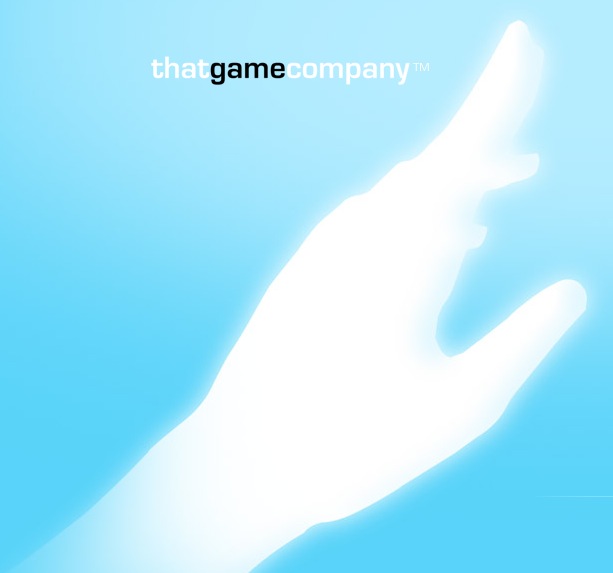
Along with pretty much no incentive system, other than the relaxing gameplay and amazing storyline, thatgamecompany’s games all have no instruction. Although some of their first games, such as Cloud, does have some leads as to where to go, their most recent games have restrained from most any direction besides from basic character movement. Even significant character abilities such as speaking and jumping in Journey have to be figured out by the player.
I’ve already mentioned the incredible graphics that inhabit every of their games are incredible. But not only does every game have a great 3D, world-like interface, but the little details in the surroundings really bring the game to life. For instance, in many games, the player character is the most well made and animated piece of the game. Of course, the characters in thatgamecompany’s games also have beautiful and seamless characters with the rest of the game, but a unique factor of thatgamecompany’s games are the terrain that the character is on, or surrounded by. For instance, the sand in Journey has a path effect, making a realistic sand texture, or the grass in Flower, easily emulating flowing grass on a peaceful, uninhabited meadow. When the character moves over or walks on these terrains, they react as if it was real. All of this adds up to a visually stunning game, and all of the media and gamer world agrees.
Not only do thatgamecompany’s game appeal to the average gamer or just average person, but their games have gotten a lot of awards and accolades too. flOw, their second game, was aquired into the MOMA (Museum Of Modern Art) in San Fransisco and Flower is in the permanent collection in the Smithsonian Museum. Journey, of course, has not been included in any museum, but has been regarded as one of the best games of the decade by many reviewers. thatgamecompany’s unique, innovative and creative games and style is the reason I have picked them for the first ever Developer Showcase. Stay tuned in this next week for individual reviews of thatgamecompany’s games.
As for those of you who are already familiar with thatgamecompany’s games, fell free to vote on your favorite below.
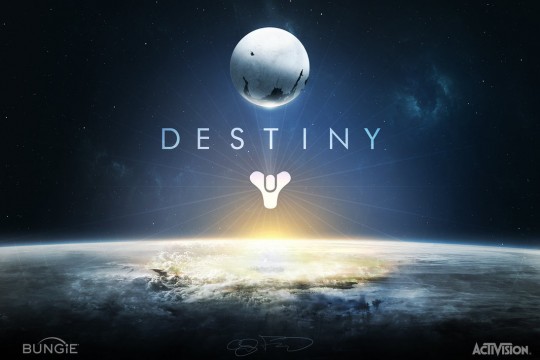
Videos Of The Week: E3 Edition
010 years
There are many big technology conventions every year, for every topic, and the one all gamers wait for every year is E3, the annual big gaming conference. At E3, tons of new games are released, some just trailers, other in full. Xbox, PS4, and Nintendo all release all their best new games. Besides for the trailers I have highlighted here, there were many more released. But, I picked the 3 that surprised and impressed me the most.
#1. Destiny
Destiny, the very highly anticipated first person shooter by Bungie, the creators of Halo, is a post-apocalyptic space game, in which you, one of the last survivors on earth, has to defend and defeat what looks to be aliens with incredibly sophisticated technology, called “the darkness”. And this is all after the human race was at it’s peak, traveling space and living up to 3 times as long. The “cowboys in post apocalyptic space” vibe it’s giving off certainly enhances the excitement over this game, and the expensive and very well made certainly trailer shows that off. After all the hype, the release of Destiny was one of the highlights of E3.
#2. Nintendo Amiibo
This cheesy video by Nintendo introduces, Amiibo, Nintendo’s line of toys that interact with their console Wii U. You can use these toys to gain points and experience with the same character throughout some different Nintendo games, including Mario Kart 8 and Super Smash Bros. Of course, this isn’t a unique idea, and Disney Infinity and the original Skylanders both are the exact same game as Amiibo, except they only play their own game, one an adventure and one an open world game. It seems as if this is Nintendo’s last ditch attempt to catch some of their success, because after all, both of those game can use Nintendo’s consoles.
#3. Legend Of Zelda open world
Like Nintendo Amiibo, this video is introducing another one of Nintendo’s games at E3, but this time just another update to the long and storied Legend Of Zelda series. Zelda has always been one of those “open world but not really” games, where you can move around but are very restricted. In this new release, Legend Of Zelda will be going full open world, and the amount of graphics put behind this is amazing. Everything from each individual blade of grass to Zelda’s horse is exquisite.
AOTW: Piano Tiles – Simple, Yet Addicting
0After a while, most mobile games get old. You think, “Oh, this is really cool! I will play this for at least a year!” and then just forget about it after 2 weeks, maybe even deleting it because of lack of space. This is the unfortunate life of the average game. But there are some, the few and the far, that stick with you no matter how long you play it. These games build up a legend, with big names such as Angry Birds, Candy Crush, Badland and others. And I now have one more game to add to that list. And it’s called Piano Tiles.
Piano Tiles rides the app fad wave perfectly. Starting with Flappy Bird, many quick, unprofessional and easy to make games have been rising to the top of the App store free list, with games such as Stay In Line and Make It Rain. Piano Tiles is one of these games. The game engine is really, really simple. The starting screen (on classic mode) consists of 4 rows of rectangular blocks, with more and more rows on top of that. In each row, there is one black rectangle. Basically, you have to click on the black block. Over and over again. As fast as you can.
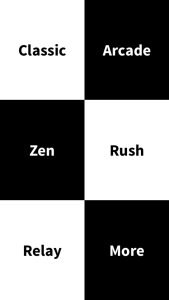
The goal of the game depends on the mode you are playing in. In classic mode (my favorite), you have to get 50 as fast as you can. In Arcade, you have to keep up with the gradually speeding up blocks. There are five modes in total with Classic, Arcade, Zen, Rush and Relay. It all makes for a great and, yes, extremely addicting game. It is one of those games where, even when you get your high score, you think, “Phht, I can do better than that.” And then you play it again.
In the past month, Piano Tiles has been one of my favorite games. It’s not one of those time suckers like Clash Of Clans where you can’t stop for half an hour without ruining everything you’ve done. You can play it in a really short time span, and if you are cut off and have to stop in the middle of the game, who cares. The whole game only takes 10 seconds anyway. And I have to say, even though it is really simple, they really pulled it off. The playing experience is great, and the seamlessness between tapping the rectangles makes for great, quick play.
And yes, I really do play the game. To prove it, here are my top scores for Classic and Arcade. Comment if you can beat it.
Classic(50) – 7.464
Classic(25) – 3.767
Arcade(regular) – 257
Arcade(fast) – 156

